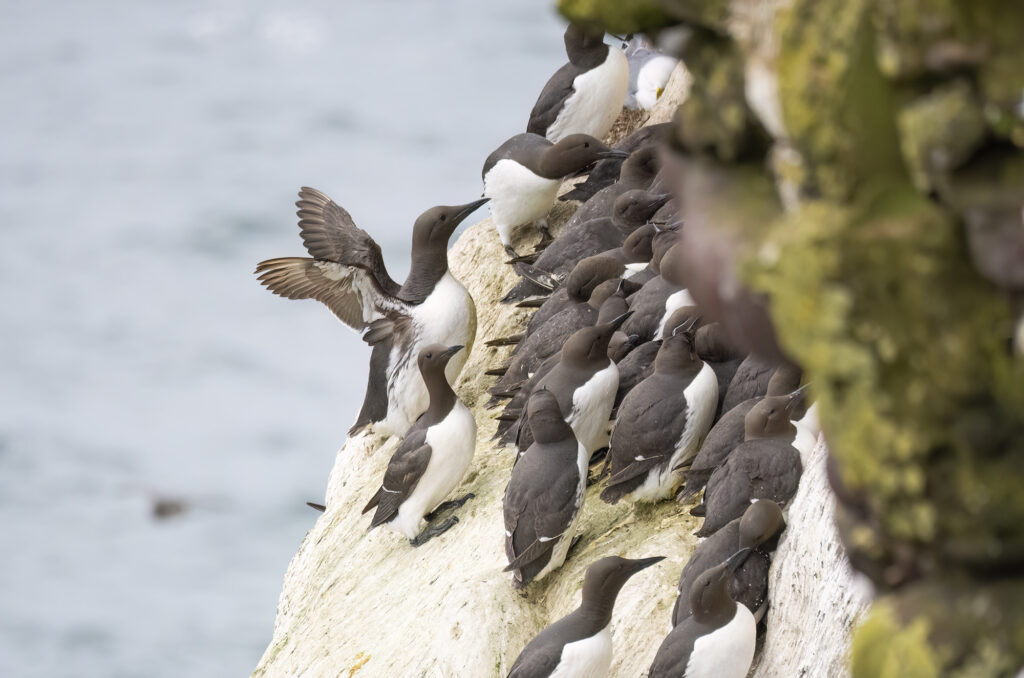There’s nothing like the sight, sound and (let’s be honest) the smell of a seabird colony. The amount of activity concentrated in one place is overwhelming. A bustling city full of residents with one thing on their minds – raising the next generation. I say residents, but seabird cities are full of visiting birds that arrive in spring and are gone before the autumn. Job done, and off they go – back out to sea for the winter.
On a short holiday to the east coast of Scotland at the beginning of June, we visited the RSPB’s Fowlsheugh Nature Reserve and the Arbroath Cliffs, which includes the Scottish Wildlife Trust’s Seaton Cliffs Nature Reserve. Both locations are ideal for photographing seabirds, especially if you are like me and would rather avoid getting on a boat.
The face of Fowlsheugh
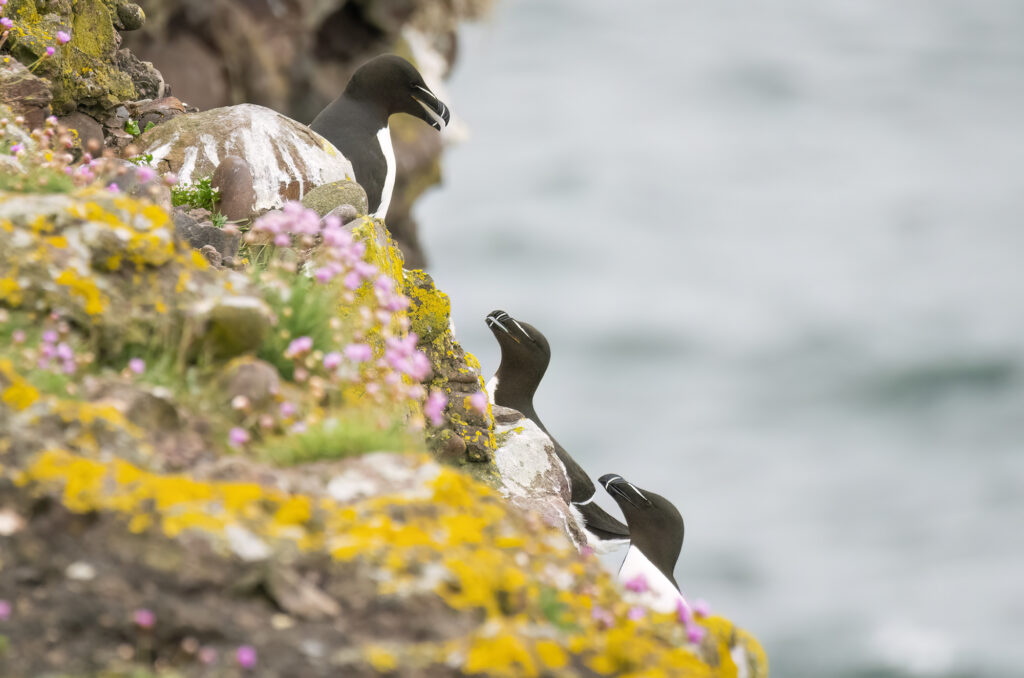
Fowlsheugh was our first port of call on a windy and overcast morning. These conditions were what I’d hoped for. Photographing seabird colonies in the summer can be tricky. If you can’t be at these places very early in the morning or late in the evening, you can be forced to capture images in harsh, bright sunlight through shimmering heat haze – as were the conditions when we visited the Isle of May in June 2018. I hoped that the cloud at Fowlsheugh would allow for clear images, give softer shadows and provide a dark background for portraits. The only downside was the strength of the wind, which meant that filming the colony to try and capture the noise was pretty pointless.
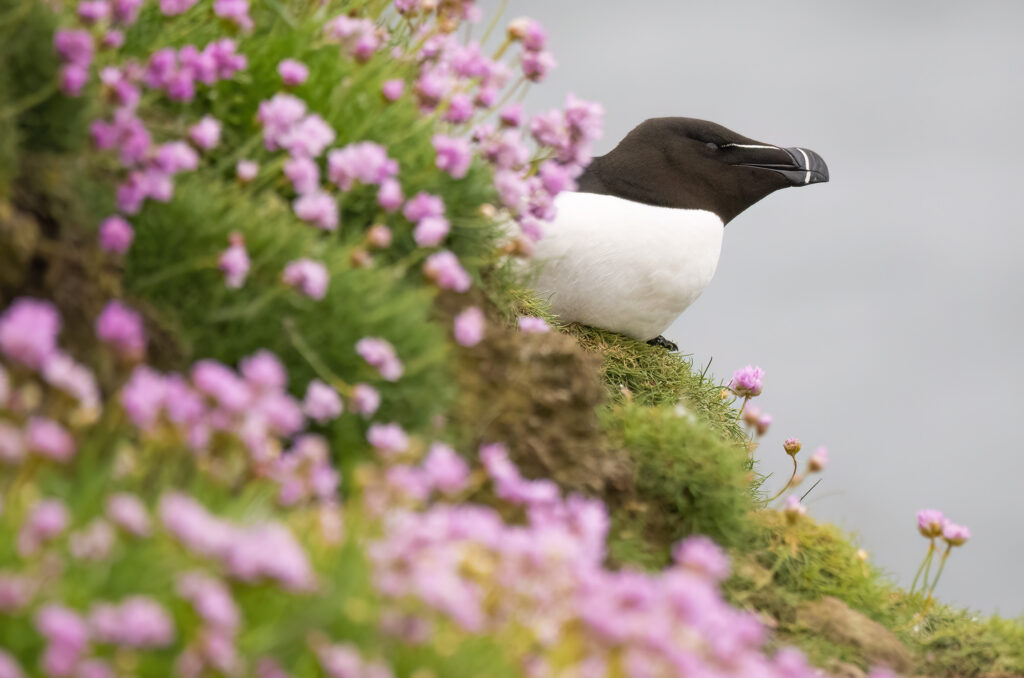
The path at Fowlsheugh provides seemingly unending opportunities for photographing the seabirds on the cliffs. It’s hard to know where to point your lens next. Rather than having the scattergun approach I had previously adopted, experience taught me to focus on isolated birds for portraits and spots where the birds were crammed in to capture the feel of the colony.
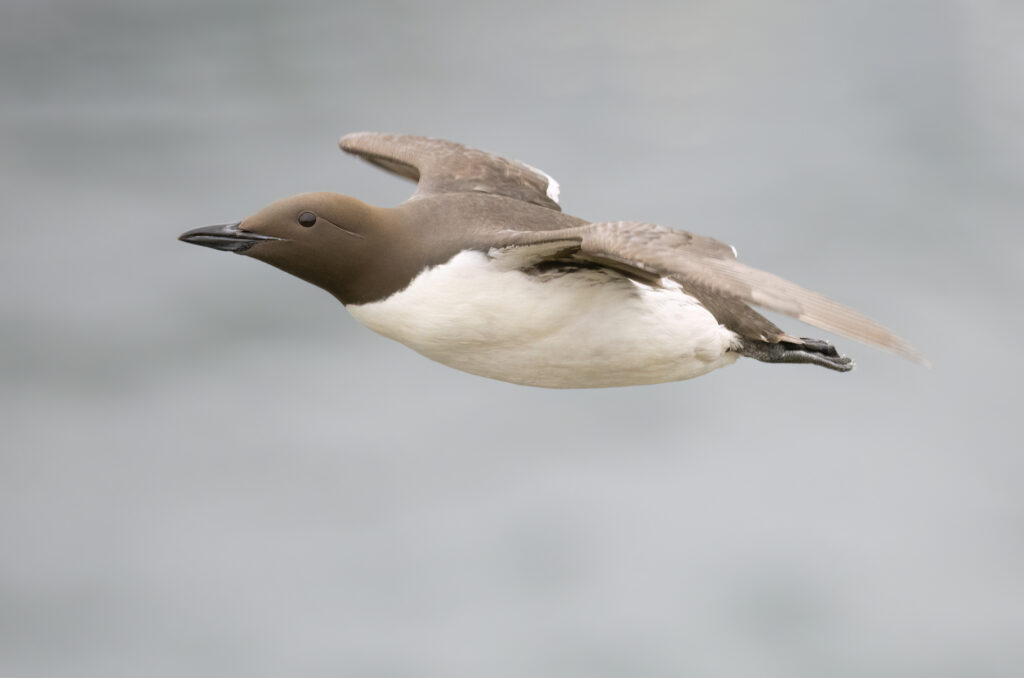
I also wanted to practice photographing the speedier birds in flight – you don’t realise how fast the razorbills and guillemots are flying to get to their spot on the cliffs (they can reach almost 50 miles per hour) until you need to lock and hold focus on them! I also had a few more specific items on my wish list, such as capturing the yellow inside of a razorbill’s bill.
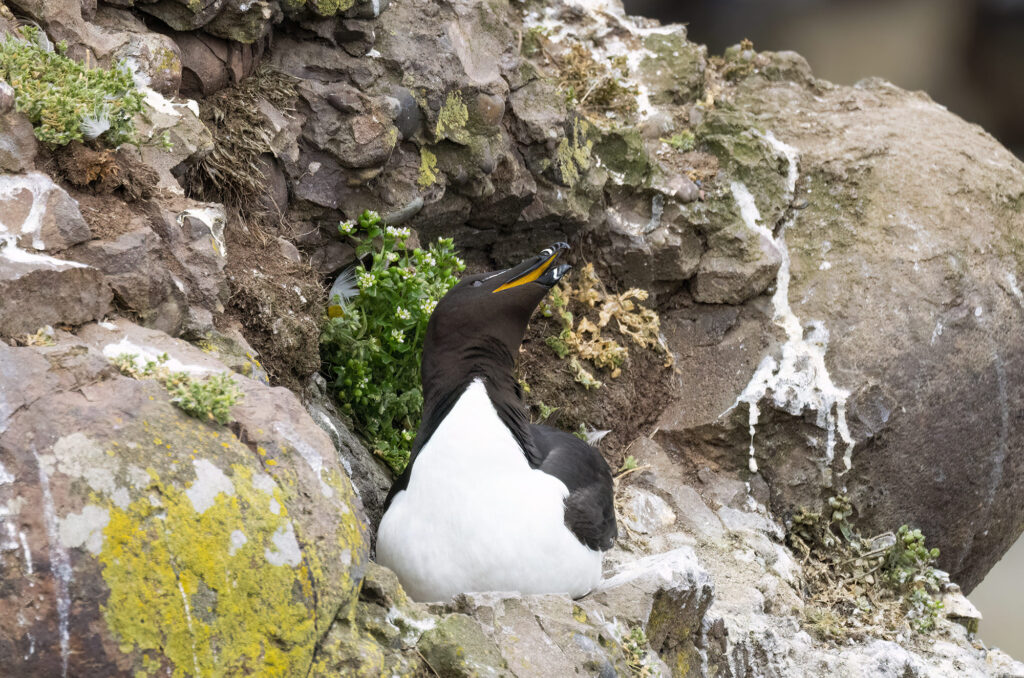
Photographing fulmars was also on the list, but I was unprepared for the beauty of the pair shown in the image below. Tucked up together on the grass-covered rocks, they preened and snoozed – peaceful scenes from a chaotic place. It’s worth scouring the cliffs for intimate moments like this amongst all the hustle and bustle.
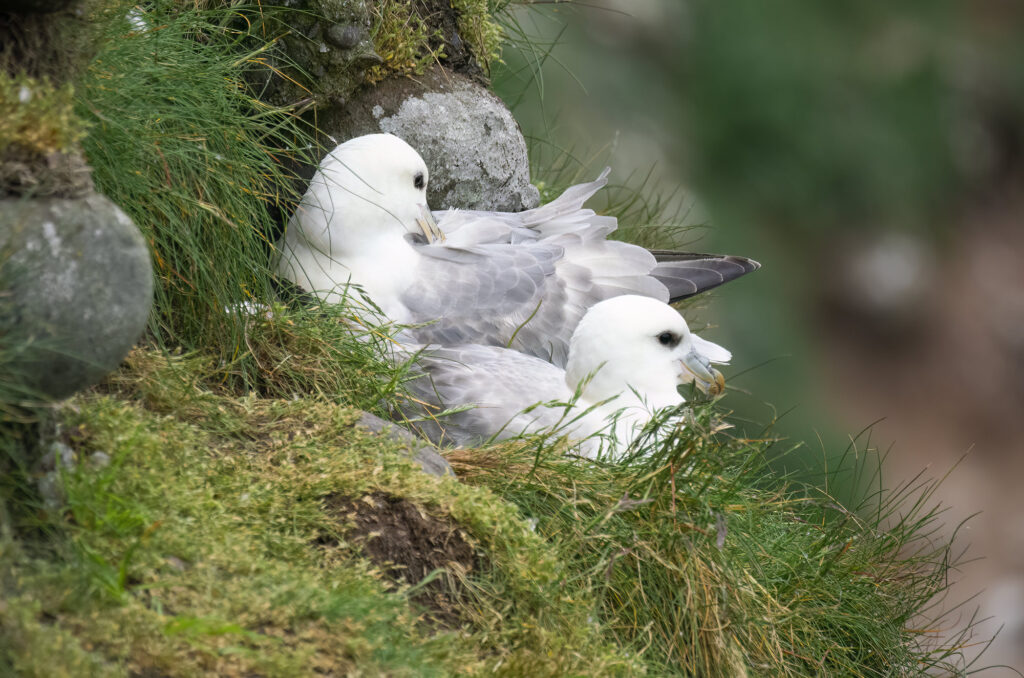
There were also moments of comedy to capture. As well as some failed landing attempts that caused all hell to break loose, there were some very grumpy-looking residents of seabird city that I couldn’t resist photographing. The guillemot in the centre of the photo below looked particularly unhappy with its spot on the cliffs – an image that perfectly represents the idea of being crapped on from a great height.
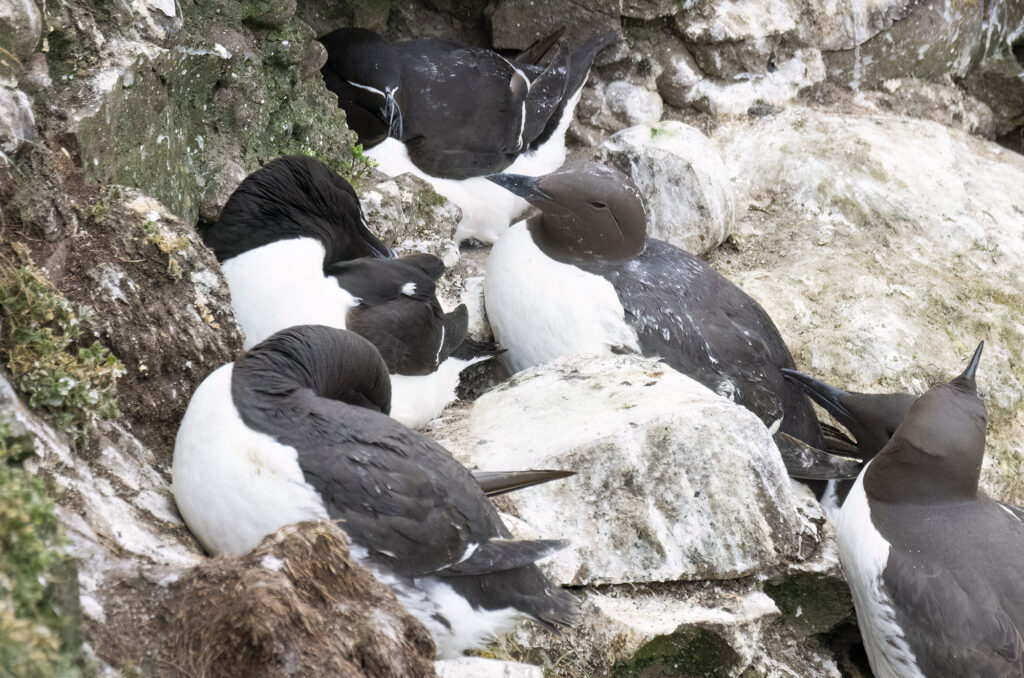
It was a treat to see a brooding razorbill adjusting the position of its precious egg. These birds don’t generally build nests – as the pointed shape of the egg stops it from rolling off the cliff when the parent moves, though they still have to be careful. They only get one chance after all; razorbills are monogamous, and females typically lay only one egg per season.
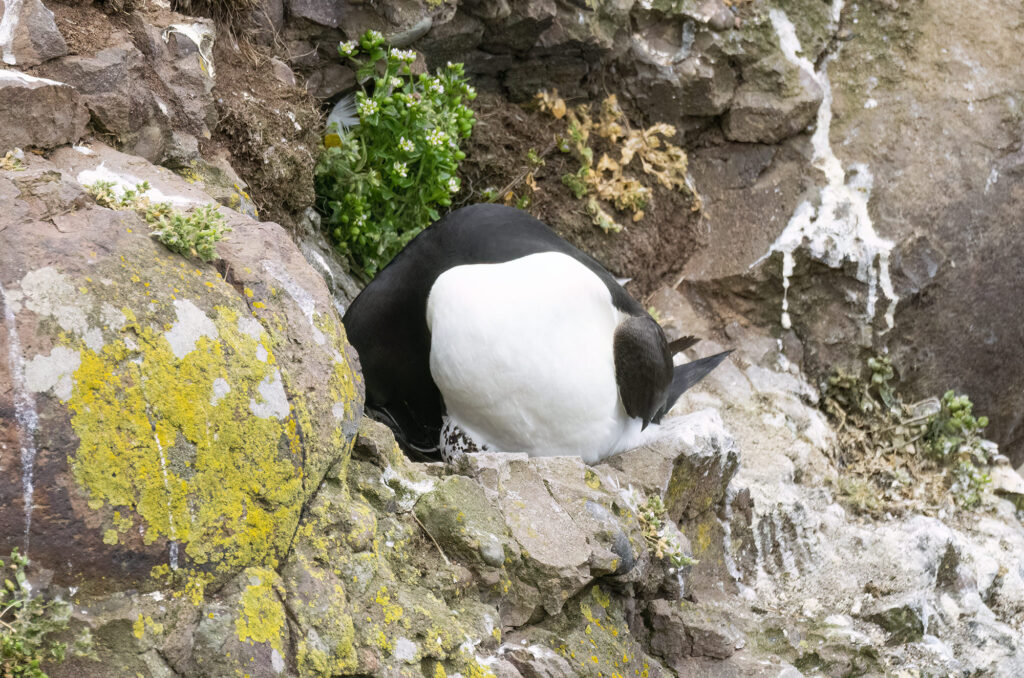
Later we found a razorbill eggshell, probably stolen by a gull. We held in our hands a literal representation of a broken breeding season for that razorbill pair – they will both have to survive until next year and try again. So much hangs in the balance on those tiny ledges.
Care on the cliffs at Arbroath
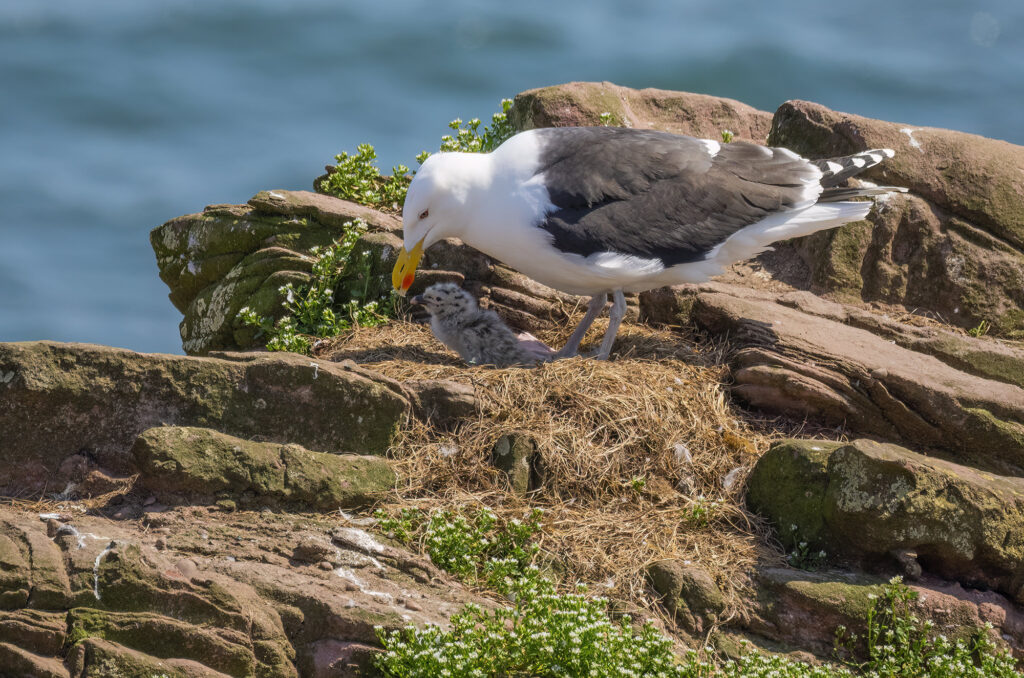
While the Fowlsheugh seabirds were on eggs, the gulls on the cliffs of the Arbroath coastal path were busy raising their chicks as the sun came out and the temperature rose. I felt privileged to watch and photograph these birds from the elevated position of the clifftop path – looking across and down into both herring gull and great black-backed gull nests.
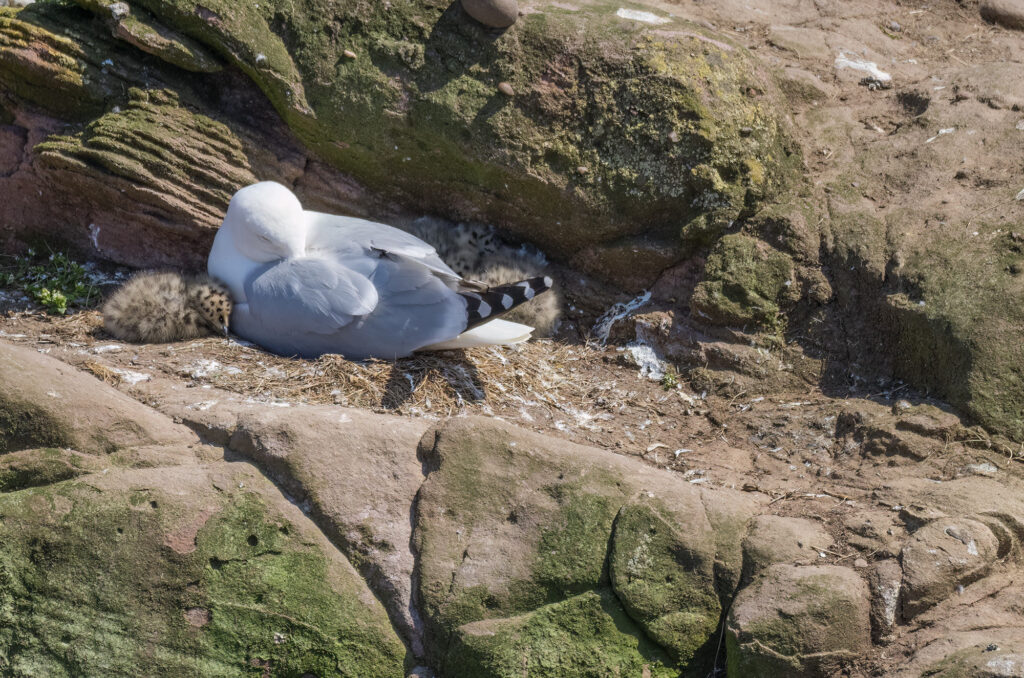
Witnessing these birds caring for their young got me thinking about how we anthropomorphise gulls, but only when it suits us. For example, we accuse gulls of stealing food from us and in extreme cases call them “evil”, when kleptoparasitism of food is perfectly acceptable behaviour in gull society (although not in ours). However, we refuse to anthropomorphise their behaviour and acknowledge them as good, protective parents (something acceptable in human society) when they are swooping down at us to protect their young – because we find that behaviour stressful. It’s definitely humans that are the problem here, not the gulls!
The future in a gannet’s eye
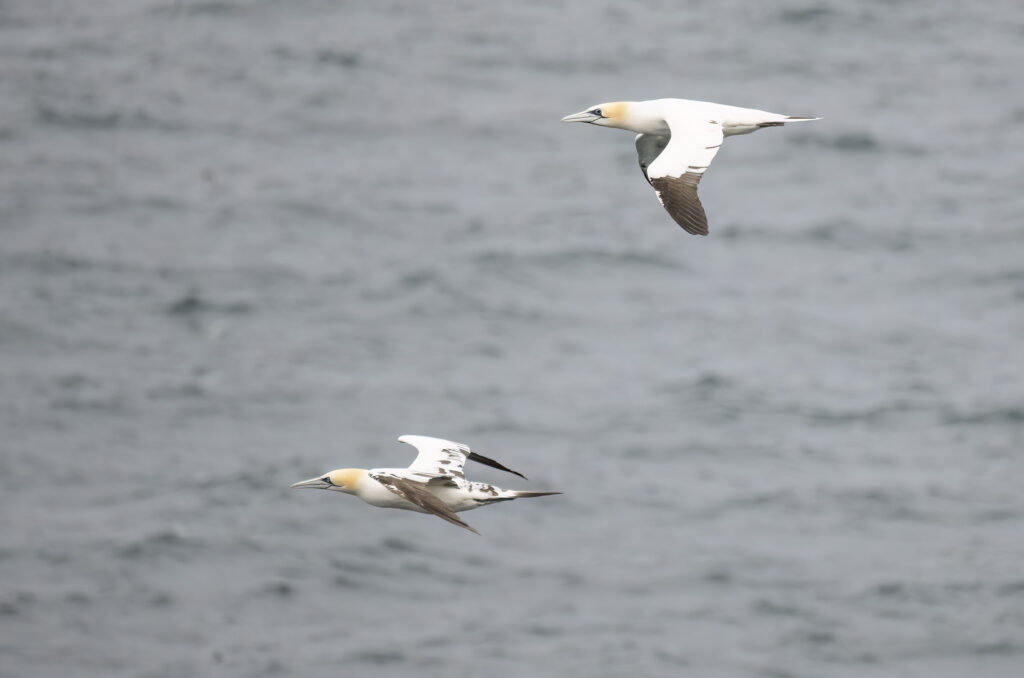
While we walked along the cliffs at Fowlsheugh, a pair of young gannets flew by. One had a black eye – a sign that the bird had Highly Pathogenic Avian Influenza (HPAI) H5N1 at some point. It was heartening to see one of the survivors of avian flu in the flesh, but it was also a stark reminder of the fragility of our seabird colonies. We must do all we can to protect these birds living on the edge.
